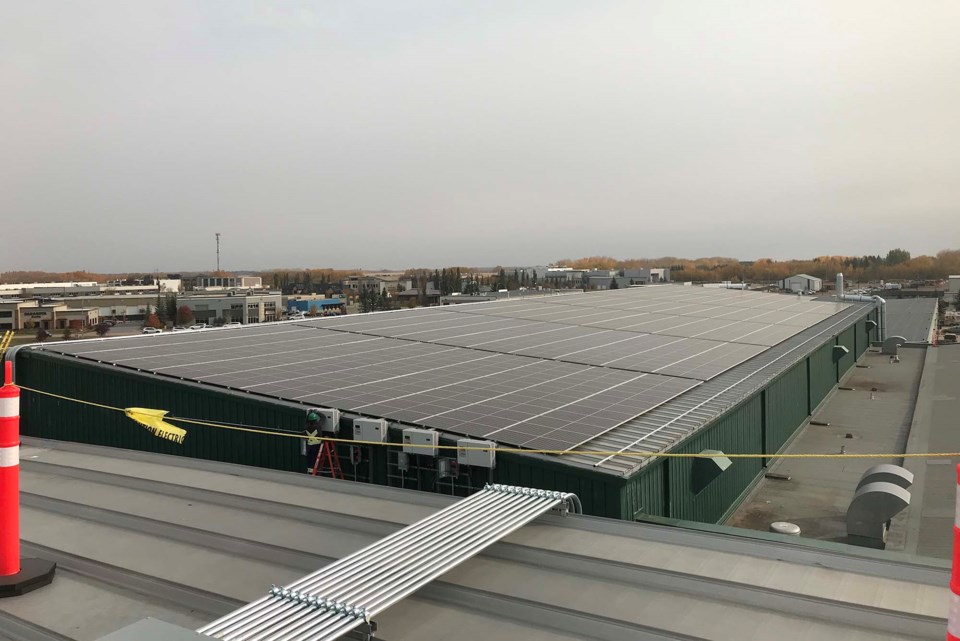The Gazette checked in with City of St. Albert project manager Karsen Zwiers on Oct. 28 about ongoing energy-efficiency improvements at Servus Place.
Chief among them is the solar array on its rooftop, which is projected to come online by mid-November.
“It’s a pretty exciting system,” Zwiers said, as it has a generating capacity of about 1.1 megawatts of DC electricity, it is likely the biggest array in St. Albert, edging out the roughly 812 kW DC system at Orion Plastics and dwarfing the ones at the city’s bus depot and public works yard combined.
The array covers the roof of the field house and half of the Go Auto Arena, Zwiers said. It is projected to generate enough electricity to power about 148 homes for a year or meet 16 per cent of the rec-centre’s annual electricity needs, which would prevent about 580 tonnes of greenhouse-gas emissions a year.
Acting environment manager Meghan Myers said this system cost $1.5 million, virtually all of which was paid for by the province and the Municipal Climate Change Action Centre (MCCAC). These and other upgrades at Servus Place are meant to lower the city’s energy bills and address global heating.
Greener inside
The solar array represents a little over half of the $2.4 million in energy-efficiency upgrades made to Servus Place this year, about $2 million of which was covered by MCCAC or provincial grants.
Zwiers said crews finished swapping out the fluorescent lights on the ground floor of Servus Place with LED ones for $750,000 last week. He projects that the bulbs will save enough electricity to power about 66 homes a year, preventing some 257 tonnes of greenhouse-gas emissions, and reduce the rec-centre’s maintenance costs, as LED bulbs last longer than fluorescents. They should also make the place look brighter. The bulbs are also dimmable, unlike the fluorescents, which should save additional energy.
Zwiers said this year’s retrofit replaced about 600 of the 1,820 lights at Servus. Crews hope to replace the rest of them as soon as they have the money.
Crews fired up eight new variable frequency drives at the Landrex Water Play Centre on Oct. 14, Zwiers said. Unlike the old motors, which ran full tilt all the time to circulate water, these new ones can spin up or down based on pool activity, reducing power use by about five per cent and preventing some 240 tonnes of greenhouse-gas emissions a year. The drives are expected to pay for themselves in about a year due to grant funding.
As noted in February, the Troy Murray and Mark Messier arenas at Servus have both been upgraded with REALIce systems, which eliminate the need to use hot water to resurface rinks, reducing energy use. Zwiers said these systems are projected to shave about one per cent off the rec-centre’s electricity and gas bills, and are expected to pay for themselves through savings in about a year.
Zwiers said he hopes to roll out variable frequency drives and REALIce systems at other city facilities in the years ahead.
Myers said crews are doing energy audits of city buildings this year to find other cheap ways to save energy.




